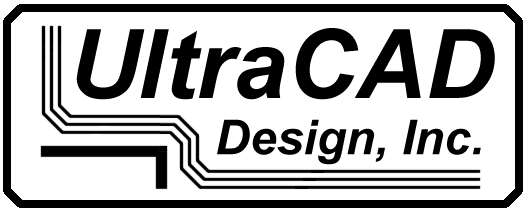
 |
UltraCAD Design, Inc |
| Home |
Books & Resources |
Calculators & Tools |
Simulations | ||||||
| xxxxxxxxxxxxxxxxxxxxxxxxxxxxxxxxxxxxxxxxxxxxxxxxxxxxxxxxxxxxxxxxxxxxxxxxxxxxxxxxxxxx | |||||||||
|
|
|||||
|
Conventional wisdom suggests: "The cross-sectional area of a via should have at least the same cross-sectional area as the conductor or be larger than the conductor coming into it. If the via has less cross-sectional area than the conductor, then multiple vias can be used to maintain the same cross-sectional area as the conductor." (IPC 2152, page 26) |
|||||
|
In other words, if the conducting cross-sectional area of the trace (width * thickness) is n times greater than the conducting cross-sectional area of the via, then n vias are required. Almost the entire industry believed this, including those of us at Ultracad, until Johannes and I began publishing our research results. But consider this: |
|||||
|
|
|||||
|
|
|||||
| Consider the case of two identical trace pairs,
shown above. Assume the trace segments have conducting cross-sectional areas
equal to A. Assume there are vias connecting the top and bottom trace
segments. And assume those vias each have conducting cross-sectional areas
equal to A. Assume there is a current, I , along the trace. If there is a
single via, then the current through the via is I. If the ratio of the
conducting cross-sectional areas is n = 2, and there are 2 vias connecting
the traces, then the current through each via is I/2. If the ratio of the
conducting cross-sectional areas is n, and there are n vias connecting the
segments, then the current through each via is (approximately) I/n. The power dissipated in any resistance is I2R. (Recall that temperature is related to power dissipation.) This is the power dissipated in the top case. If there are two vias, the power dissipated in each via is (I/2)2R = I2R/4, and the total power dissipated in the via pad area is I2R/4+ I2R/4 = I2R/2, or one-half (1/n) the power in the single via case. In the general case, the power dissipated in each via is (I/n)2R and the total power dissipated in the pad area is n*(I/n)2R = n*I2R/n2 = I2R/n. So how any vias, y, does it take to have the
same power dissipation in the via pad area as in the case where n=1? The answer is y = n1/2 vias. The interpretation of this is that if the ratio of the conducting cross-sectional areas is n, then n current carrying vias gives us the power dissipating ability of n2 vias. Or, stated another way, if the ratio of the conducting cross-sectional areas is n, we only need n1/2 (the square root of n) vias to give us the same total power dissipation capability as a single current carrying one when n=1. |
|||||
| Bottom Line: if the conducting cross-sectional
area of the trace (width * thickness) is n times greater than the conducting
cross-sectional area of the via, then only the square root of n vias are
required, not the n number of vias common wisdom has previously told us.
|
|||||
|
|||||

Click on logo to return to UltraCAD's Home
Page.